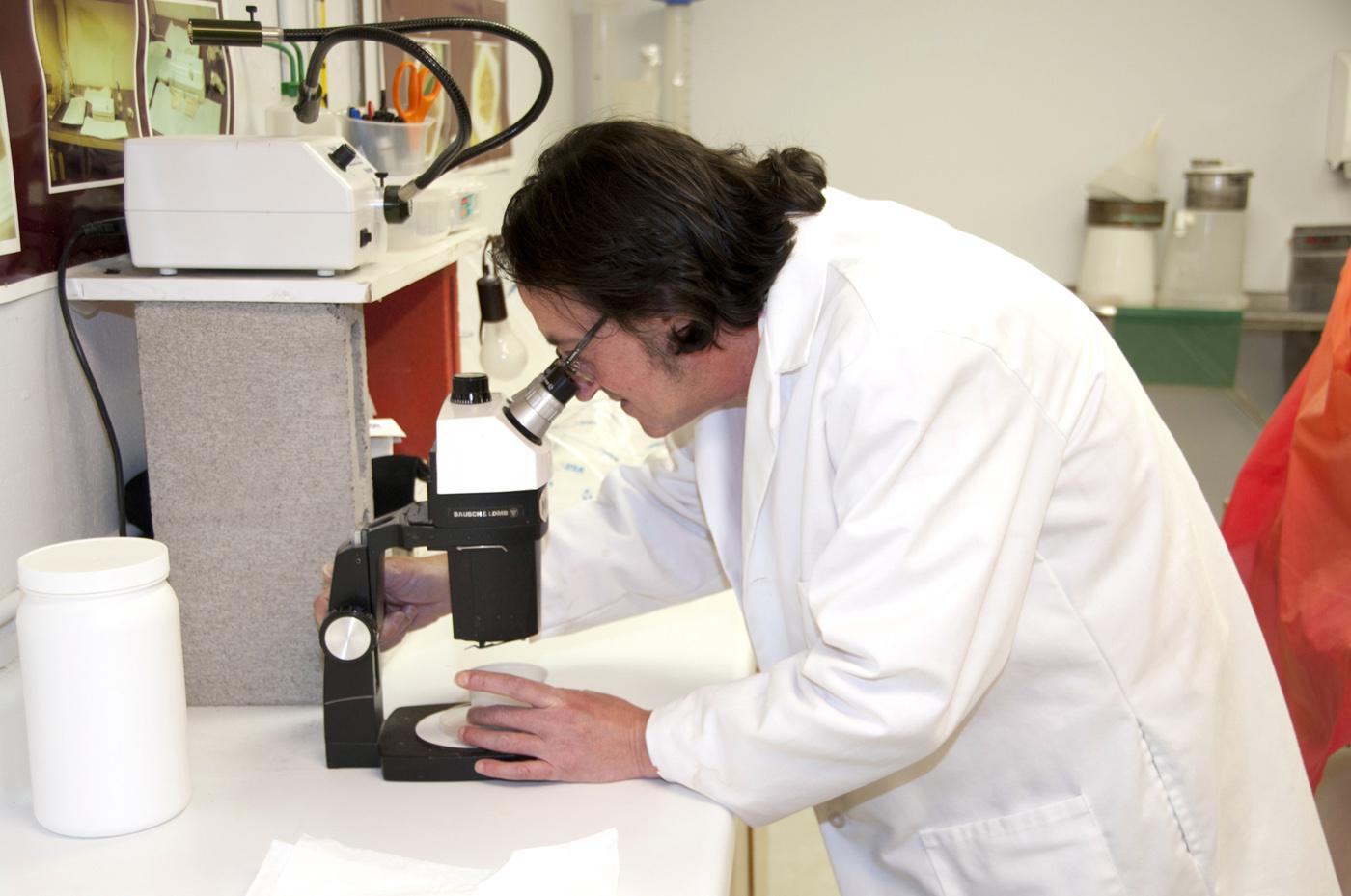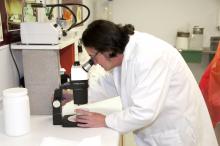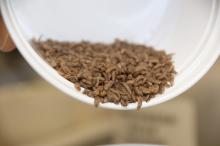Information Possibly Outdated
The information presented on this page was originally released on January 19, 2012. It may not be outdated, but please search our site for more current information. If you plan to quote or reference this information in a publication, please check with the Extension specialist or author before proceeding.
High-protein insect studied at MSU
MISSISSIPPI STATE – Imagine an insect that can eat nearly anything, control microbes, live off of water alone in the adult stage, and be a good source of protein for animal feed. The black soldier fly is real, not science fiction, and it has researchers at Mississippi State University abuzz with excitement.
John Schneider, a professor of entomology in MSU’s Department of Biochemistry, Molecular Biology, Entomology and Plant Pathology, said the black soldier fly is a native insect common to the Southeast. Because it is not attracted to human living spaces or food, it is not considered a pest. As part of the Mississippi Agriculture and Forestry Experiment Station, MSU scientists are studying the black soldier fly as a potential solution to dealing with large amounts of waste while also generating a feed product.
“Black soldier flies are 40 to 45 percent protein by dry weight,” he said. “Theoretically, one metric ton can be produced per day in the space of a medium-sized house, and used as a feed product.”
Harvested larvae can be dried and milled to create a high-protein meal for livestock, poultry and aquaculture consumption, Schneider said. Due to their high oil content, black soldier fly larvae may even be useful for biofuel production.
“They’re not a known disease carrier, they don’t bite or sting, and they’re not a nuisance,” he said. “They’re a versatile species with huge potential.”
Alfredo Llecha from Santiago de Compostela, Spain, is a visiting scholar to the MSU Insect Rearing Center in the Department of Biochemistry, Molecular Biology, Entomology and Plant Pathology. He said black soldier fly larvae will eat almost anything – manure, carcasses – without any remaining harmful fungi or microbial residue. These insects require no special diet, so they can be fed nearly any kind of agricultural byproducts or waste.
“If we can supply them with food and remove their waste products, they could potentially deal with significant amounts of pathogen-laden agricultural wastes,” Schneider said.
While conducting the annual MSU Insect Rearing Workshop in 2010, Schneider and professor emeritus Frank Davis learned that attendee Llecha had been rearing black soldier fly larvae in captivity.
“Several years ago, I was rearing different kinds of insects and beetles, and I found an American living in Vietnam who was researching this fly in the wild. He could not rear them in captivity, but only in the wild due to the tropical environment,” Llecha said. “In colder weather they have to be reared in a lab or special facilities. I bought some larvae and finally was able to rear them in an insect cage.”
Llecha came to MSU in June 2011 to share his expertise and to develop improved rearing methods for the black soldier fly.
“MSU is rearing millions of larvae and refining our methods,” Llecha said. “Our first goal is to design an ideal system for rearing black soldier flies. There is a lot of research to be done to optimize the system.”
Llecha said he has worked with MSU scientists to design an environmentally friendly building specifically for rearing black soldier flies. Llecha and his family have offered to make a donation of $100,000 to start the project.
The new facility will expedite black soldier fly rearing and research and expand the internationally renowned MSU Insect Rearing Workshop.
“Registration for the annual workshop is filled a year in advance. We could have a second workshop on rearing, and a special workshop focused on the black soldier fly every year,” Llecha said.
For more information on the MSU Insect Rearing Center, visit http://www.irc.entomology.msstate.edu/.




